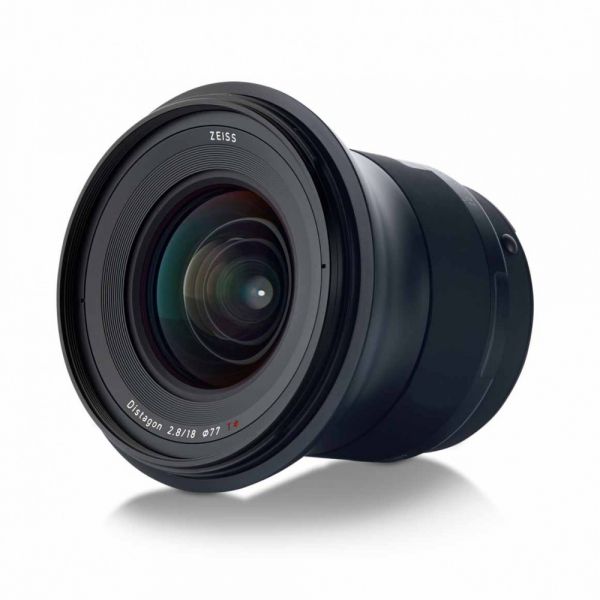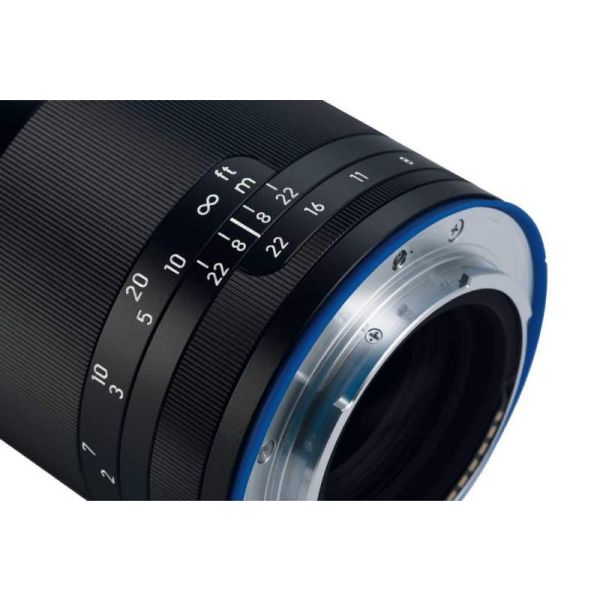Product Description
Zeiss Milvus 18mm f/2.8 ZE Wide Angle Lens – Canon EF Mount
Ultra-Wide Perspective with Uncompromising Optical Precision
The Zeiss Milvus 18mm f/2.8 ZE is a full-frame manual-focus wide-angle lens built specifically for Canon EF mount DSLRs, offering exceptional imaging performance, minimal distortion, and a dramatic 99.9° angle of view. Whether you're capturing expansive landscapes, sweeping architectural scenes, or creative environmental compositions, the Milvus 18mm empowers your vision with unmatched clarity and control.
Designed for Maximum Impact
With its ultra-wide 18mm focal length, this lens delivers a dynamic visual perspective, perfect for exaggerating space and depth while maintaining stunning edge-to-edge sharpness. The Distagon optical design (14 elements in 12 groups) ensures high resolution and distortion control, making it a powerful tool for both creative and technical applications.
Key Optical Features
ZEISS T* Anti-Reflective Coating
The ZEISS T multi-layer coating* significantly reduces flare and ghosting, maximising contrast and colour fidelity. Additional measures like blackened lens edges, internal light traps, and special anti-reflective surface designs eliminate unwanted stray light and reflections, delivering crystal-clear imagery even in backlit or high-contrast environments.
Advanced Glass Elements with Anomalous Partial Dispersion
Specialised glass elements reduce chromatic aberrations and suppress colour fringing, especially around high-contrast edges — ensuring that fine architectural lines and natural textures remain crisp and colour-true.
Precision Engineering for the Demands of High-Resolution Sensors
Full Compatibility with High-Resolution and HDR Cameras
Built for today’s most advanced full-frame DSLRs, the Milvus 18mm f/2.8 is optimised for high dynamic range (HDR) sensors and resolutions exceeding 40MP. The lens design minimises coma, astigmatism, and spherical aberrations, guaranteeing top-tier performance across the entire image field — from corner to corner, even wide open.
Creative Control Through Manual Focus
Large Focus Rotation Angle for Precision
The Milvus series is renowned for its long focus throw and buttery-smooth manual focusing, giving photographers the ability to fine-tune focus with unmatched accuracy. Engraved distance and depth-of-field scales in metres and feet assist in zone focusing and hyperfocal applications.
Built to Perform, Built to Last
Full-Metal Construction with Environmental Sealing
Encased in a premium all-metal housing, the Milvus 18mm offers robust build quality and a tactile, professional feel. Weather-sealed against dust and moisture, it performs reliably in challenging environments — from rainy city streets to windswept coastal cliffs.
Floating Elements Design
ZEISS’s Floating Elements Design maintains high image quality across the entire focusing range, from minimum focus distance to infinity. Internally adjusting the element spacing ensures constant correction of aberrations at every focus distance.
Key Specifications:
-
Focal Length: 18mm
-
Maximum Aperture: f/2.8
-
Lens Mount: Canon EF
-
Format Compatibility: Full-frame (35mm)
-
Angle of View (Full-Frame): 99.9°
-
Optical Construction: 14 elements in 12 groups
-
Focus Type: Manual
-
Minimum Focus Distance: 0.25 m (9.8 in)
-
Aperture Blades: 9 (circular for smooth bokeh)
-
Lens Coating: ZEISS T* anti-reflective
-
Floating Elements Design: Yes
-
Weather Sealing: Yes
-
Build Material: All-metal housing
-
Filter Thread: 77mm
-
Weight: Approx. 675g
Ideal For:
-
Landscape and nature photographers seeking expansive, distortion-free vistas
-
Architectural and real estate photography where straight lines and corner sharpness matter
-
Creative videographers looking for manual focus precision and rich colour reproduction
-
Street and travel photography with wide, immersive perspectives
Ultra-Wide with Unrivalled Precision
The Zeiss Milvus 18mm f/2.8 ZE for Canon offers a rare blend of optical innovation, rugged construction, and manual finesse. For those who see the world in sweeping angles and rich detail, this lens is more than a creative tool — it's an invitation to expand your visual language.
Payment & Security
Your payment information is processed securely. We do not store credit card details nor have access to your credit card information.
























